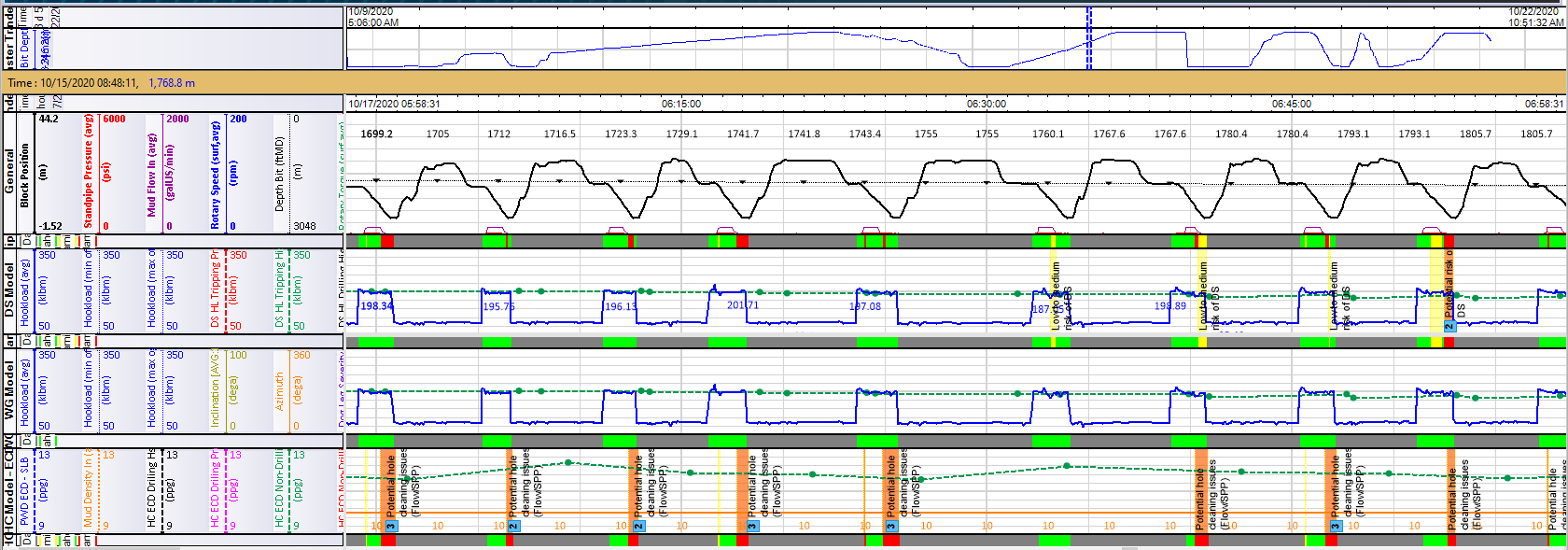
Location
- Asia
Challenge
Significant limitations posed by two high dogleg-severity zones when drilling a side-track to a production well.
Solution
Deploy differential sticking, mechanical sticking and hole cleaning machine learning agents, as part of the client’s Well Augmented Stuck pipe (WASP) initiative, in the real-time operation center.
Results
Agents—provided timely warnings and alarms—successfully supporting the rig crew operations when passing through both high dogleg-zones. No incidents or nonproductive time was incurred.
Products Used
Predictive machine learning agents were used by the real-time operation center to make informed decisions and guide the rig crew through hazardous, high dogleg and high inclination intervals.
National Oil Company (NOC) experienced a stuck pipe while drilling the main wellbore of a production well, and as a consequence needed to drill a costly side-track to reach the target. The side-track required casing to be run through two high dogleg-severity (DLS) and high inclination intervals, adding further risk of stuck pipe and cost increases.
Machine learning provided predictive situational awareness
To guide the rig crew through the high-risk intervals, the NOC realtime operation center (RTOC) deployed stuck pipe machine learning (ML) technology to provide predictive situational awareness of three critical factors:
- differential sticking (DS)
- hole cleaning (HC)
- wellbore geometry (WG)
The differential sticking (DS) agent issued three consecutive warnings followed by two alarms triggered as the casing traveled through the DLS interval. The predictive drag trend (green curve) increased slightly as the casing passed through the hazardous interval.
Warnings and alarms enable in-time adjustments to secure a safe operation
The three ML agents were closely monitored by the RTOC. Through the first high-dogleg interval, the tripping speed was 10-11 joints per hour. Because the dogleg angle was below three degrees per 100 feet, the WG agent did not trigger alarms. However, the DS agent triggered three consecutive warnings followed by an alarm because of trending increases in predictive hookload and predictive drag. The real-time center advised the rig crew to establish slow circulation while running casing in hole. Using this approach, the casing successfully passed the first interval.
It was important to manage the connection time to reduce sticking forces in the wellbore. Upon reaching the second high-dogleg interval, the running speed was slightly reduced to nine joints per hour. A static alarm was raised and communicated to the rig when connection time exceeded 10 minutes. The observed hookload was as outlined in the instructions to the driller.
As the casing traveled through the hazardous interval, the predictive drag trend increased slightly and the DS agent issued three consecutive warnings followed by two alarms. The drag trend eased up as the string with the centralizers passed the interval and more weight was below the curved section, thus pulling the string down. No further alarms were observed, and the casing was placed according to plan.
The wellbore geometry (WG) agent was set to trigger at angles above three degrees per 100 feet in combination with excessive drag. Because the DLS did not reach this threshold, the agent did not trigger. The hole cleaning (HC) warning and alarms were ignored during tripping as these related to filling up casing (seen by the mud flow in curve) instead of actually washing down to overcome restrictions running in.
Stuck pipe ML agents are “plug’n play” with existing real-time systems and displays
The RTOC streamed real-time data directly from the rig site to the predictive ML agents. For easy access and monitoring, the results were displayed in their familiar real-time system setup as predictive trend curves, warnings and alarms.
A stuck pipe situation builds up slowly over time. With the ML agents, the real-time center was able to monitor for potential build up and see predictive trends indicating problems that otherwise would have gone unnoticed.
The agreed communication protocol let the RTOC intervene and inform the rig crew 30 minutes (five joints) ahead of potential hazardous situations. This provided enough time to perform corrective actions.
NOC ran the high-risk casing operation successfully with no compromise to well integrity or safety. The target was reached, and the casing placed correctly without hampering the well objective or incurring additional cost.
“NOC ran the high-risk casing operation successfully with no compromise to well integrity or safety. The target was reached, and the casing placed correctly without hampering the well objective or incurring additional cost.”

Faazmiar is a Malaysian technology agent. Faazmiar supports PETRONAS Wells RTC on behalf of Exebenus with technical service engineers.

